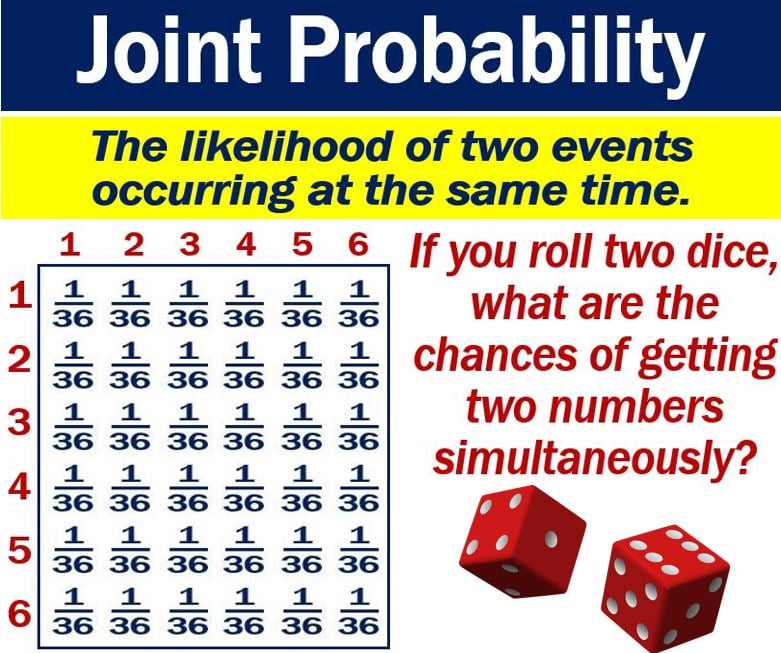What is joint probability? Definition and examples
Joint probability is a statistic that analysts use to determine what the chances are of two things happening simultaneously. It is the probability that Event A happens at the same time as Event B.
In the field of statistics, probability deals with the likelihood that something, such as an event, may happen. We quantify it as a number between zero and one. Zero indicates zero chance of an occurrence while one indicates that it will certainly happen.
Statistics is the science of collecting and analyzing numerical data in very large quantities.
Statisticshowto.com has the following definition of the term:
“Joint probability is the probability of two events happening together. The two events are usually designated event A and event B.”
We also refer to joint probability as the intersection of two or more events.

Conditional and joint probability
Joint probability is useful for analysts and statisticians when they are observing two phenomena.
For example, investors may want to know whether a decline in the dollar’s value might accompany a political scandal.
However, we cannot use this calculation to determine whether one event can influence the occurrence of another.
In other words, it does not tell us whether a political scandal could cause a dollar fall.
To calculate whether one event can influence another’s occurrence, we must calculate their conditional probability.
Joint probability – example
Statisticians express the joint probability of two events, for example, Y and Z, mathematically as P(Y, Z).
We multiply the probability of Event Y by the probability of Event Z. We express the probability of Events Y and Z as P(Y) and P(Z) respectively.
Let’s try to calculate the probability that number 6 will occur twice simultaneously when we roll two dice.
Each die has six possible numbers. Therefore, the probability of a six occurring in one die is one-sixth (1/6) or 0.1666. If we call the dice Y and Z we express the probabilities as follows:
P(Y) = 0.1666
P(Z) = 0.1666
(‘P’ stands for ‘probability’)
Two calculate the probability of the two dice coming up with two sixes simultaneously, we calculate as follows:
P(Z,Y) = 0.1666 x 0.1666 = 0.02777
Therefore, the joint probability that one roll of two dice gives us two sixes is 0.02777.
Video – different Probabilities
This Zed Statistics video explains what marginal probability, conditional probability, and joint probability are.
The speaker says he is looking at basic probability, i.e., possibility as it relates to categorical variables. In other words, he is looking at ‘yes/no’ type variables.

